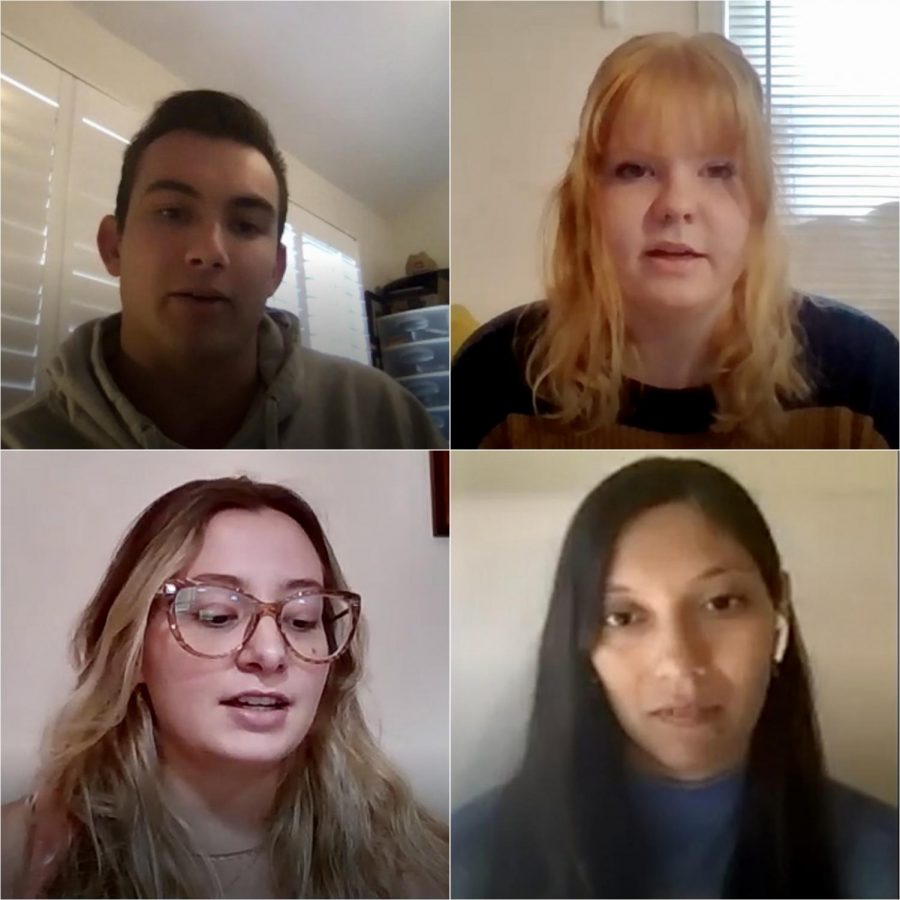As San Diego State students are reaching the end of their first semester amidst a pandemic, many have decided to take next semester off.
971 students took a leave of absence during the spring 2020 semester compared to about 264 students for the spring 2021 semester, according to SDSU Associate Vice President of Enrollment Management Stefan Hyman.
The amount of students taking a leave of absence for the spring 2021 semester is expected to grow. This is consistent with past semesters, according to Hyman.
With the recent University Senate decision to replace Spring Break this year with four separate “rest and recovery” days, many college students are concerned about the mental health issues and financial obstacles that come with continuing their college careers solely online.
“I think it’s important to understand that if you are not learning the best over the online format and maybe you don’t quite know what you want to do in terms of what your major is or what your career is, or if you’re going through a hard time right now, I would consider taking a leave of absence if you can,” first-year English graduate student Weston Robertson said.
Robertson decided to take next semester off and return in the fall because he feels like both his mental and physical health is drained after this semester.
“You’re having so much screen time, it drains you,” Robertson said. “It’s a lot of mental work.”
Some international students, graduate students and undergraduate students have decided to take next semester off because of screen time burnout, wanting more relevant experience/a better educational opportunity and to save money.
International second-year student Ornella Rossi decided to take next semester off because a big part of her going to college in the U.S. was to interact with students here and practice speaking English.
“I decided to study in the U.S. not only for the education but for the experience of living in the U.S., so meeting new people and talking in English most of my days and the fact that I would only have online classes, I feel like I’d be wasting my potential of studying in the U.S.,” Rossi said. “I feel like it’s not worth it spending all that money when I’m going to be studying in my room, not meeting new people, not meeting my professors.”
Rossi, along with other students living on campus, was only given a 24-hour notice to move out of the dorms back in March when SDSU first moved all classes online due to the COVID-19 pandemic.
For international students like Rossi, who is from San Paulo, Brazil, moving back included many international fees, expensive flights, getting storage and more. Rossi also said that the U.S. dollar is worth five Brazilian dollars so it’s considerably more expensive to study internationally.
“International students and out-of-state students pay a fee per every credit and we had to pay the whole tuition in full and we weren’t even having the same experience,” Rossi said. “We were having online classes and I honestly believe you don’t learn as much.”
For students like biochemistry third-year Jeannette Espinoza, the decision to take the semester off also came from wanting a more relevant educational experience.
As an alternative to online classes next semester, Espinoza is currently applying to co-op or extended internships within her major which are paid and are full-time.
“Especially as a biochemistry student, I want to be in the lab,” Espinoza said. “ I want to be able to compete with everybody else who is receiving a degree or their masters. Co-ops give that hands-on experience and will help me financially.”
Espinoza is an independent and had to take out loans to attend college. She usually works to help support herself while attending school but the job market is even more difficult due to the pandemic.
Other students like interdisciplinary studies fourth-year Zoe Jones felt like there was a lack of support and communication from SDSU and her professors.
“It’s hard enough having to deal with everything but having to basically teach yourself,” Jones said. “It was all self-led to me and there didn’t seem to be an open line of communication between students and professors – not in most of my classes at least.”
In order to take a leave of absence, a student must be in good academic standing, not have any fees due or holds and be previously enrolled in at least one semester, Hyman said.

Students can take a leave of absence for a maximum of four semesters either consecutively or spread out.
To take a leave of absence, there’s a brief form to be completed including the reason for the absence. Then, those request forms go to the registrar office for approval which can take a couple of weeks, Hyman said.











